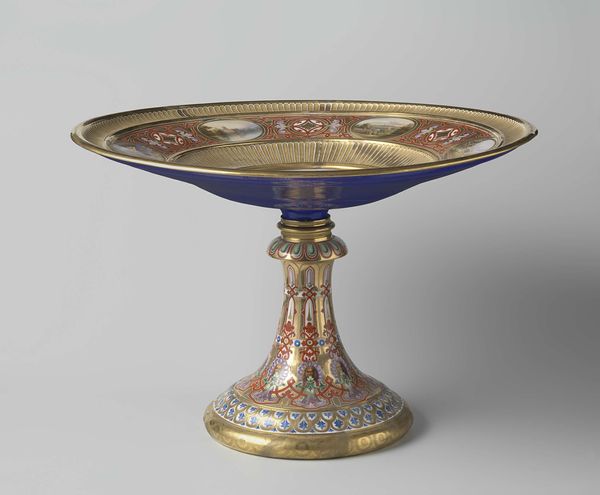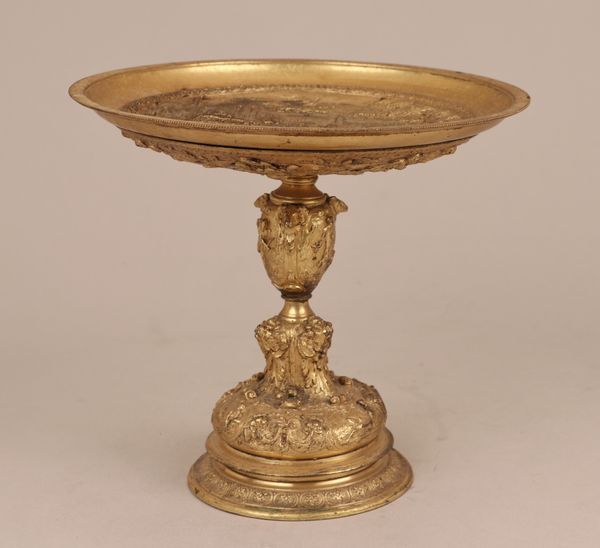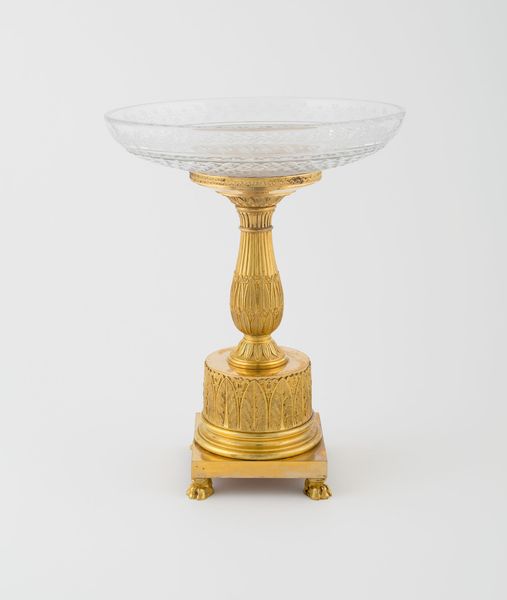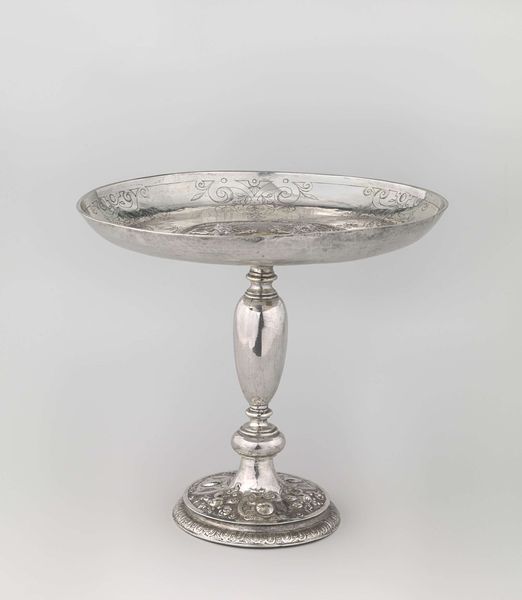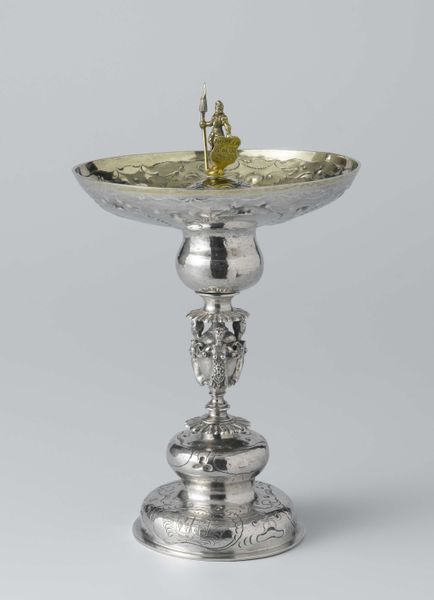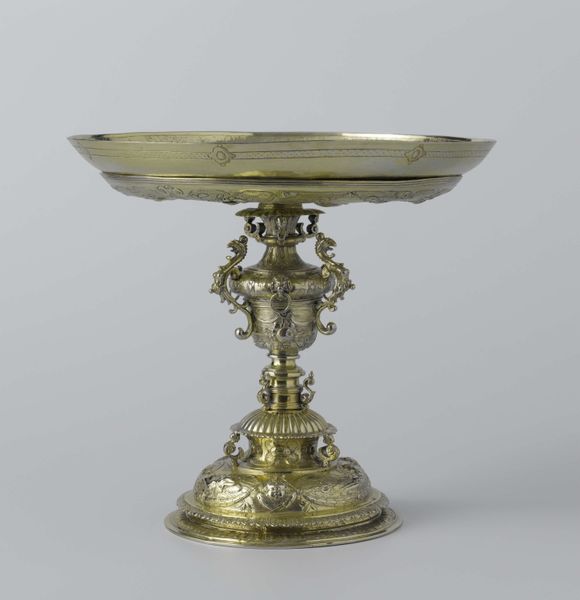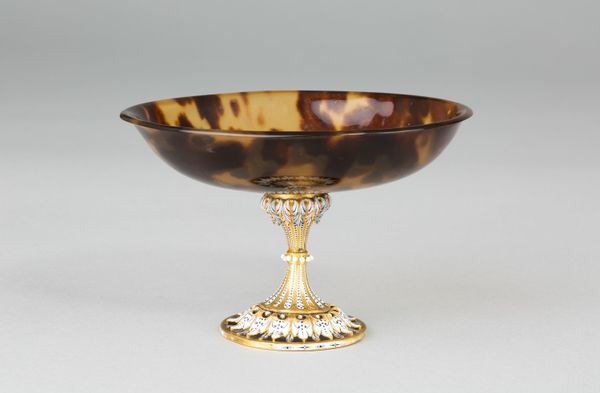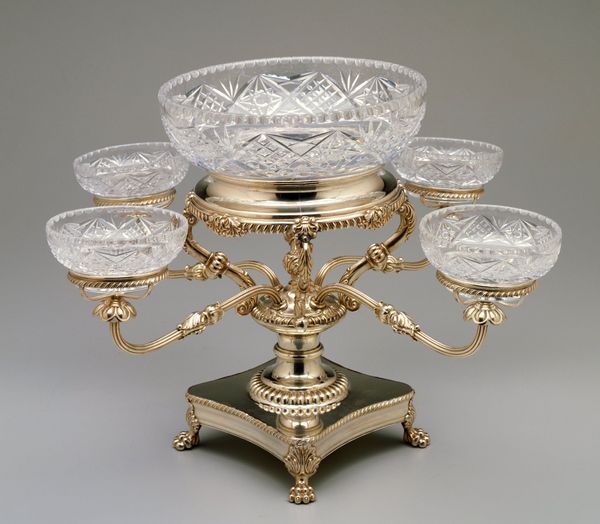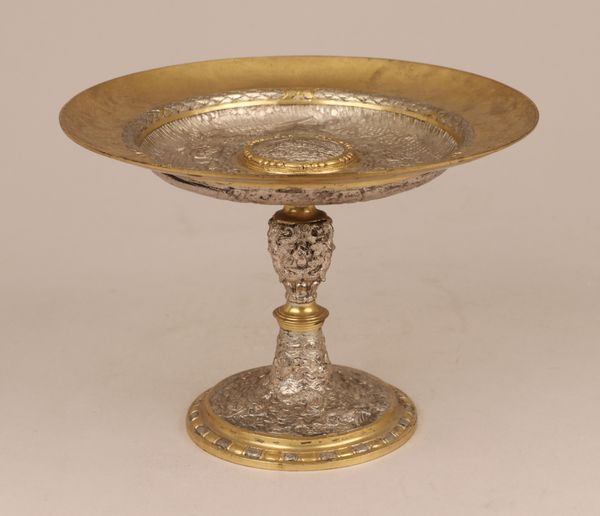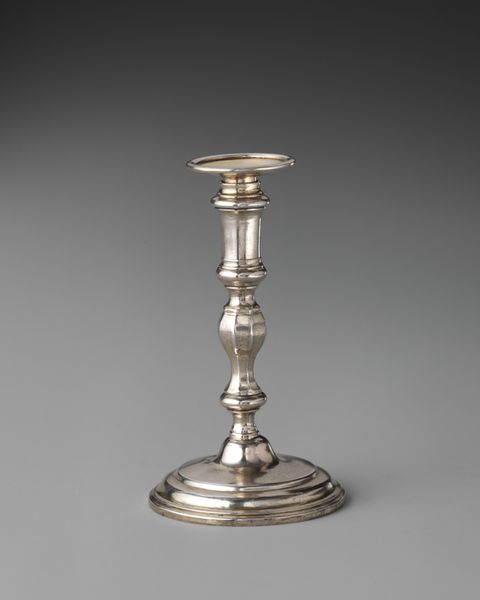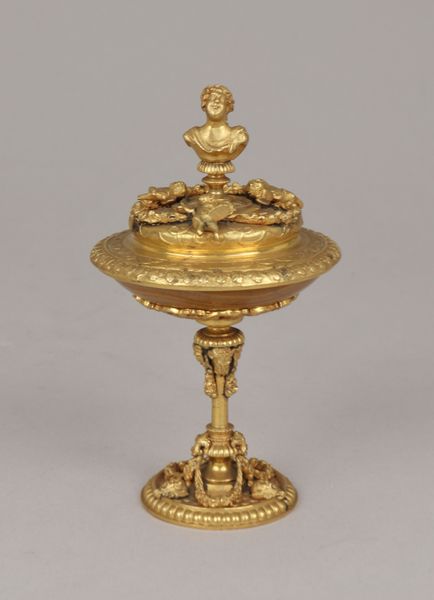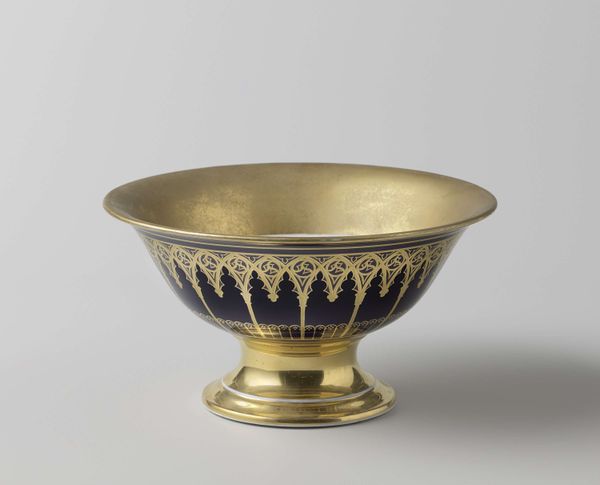
ceramic, porcelain
#
ceramic
#
porcelain
#
classicism
#
ceramic
#
decorative-art
Dimensions: height 39.2 cm, diameter 58.5 cm, diameter 26 cm
Copyright: Rijks Museum: Open Domain
Curator: Here we have a Tazza, or footed dish, crafted by the KPM, or Königliche Porzellan Manufaktur, circa 1836 to 1837. It’s currently part of the Rijksmuseum collection. Editor: It feels so rigidly formal, almost intimidatingly perfect, but there is also something inherently pleasing in the symmetrical form and shiny textures of the porcelain and gilding. Curator: Agreed, the symmetry is a key aspect of its classicist style. KPM, under royal patronage, was deeply invested in precision. How do you see the interplay of materials speaking to societal dynamics of the time? Editor: Given that this Tazza was likely produced for aristocratic consumption, I read its very existence as an assertion of power, a symbol of wealth during an era of great social inequalities. Who was benefiting from this labor and what did they get in return? Curator: The craftsmanship itself is central. The porcelain-making process in the 1830s was intensely manual, requiring skilled artisans. It forces one to consider the work that underpins the item. How does appreciating the object involve recognizing labor and technical know-how? Editor: Absolutely, looking beyond mere beauty asks us to investigate questions of labor practices during that era and understand that beautiful works like this had a heavy cost for those in production industries, especially in terms of class divisions. Also, did colonial routes supply any materials for its fabrication? Curator: An excellent point. We are viewing here not merely an aesthetic item, but the convergence of skilled crafting traditions, factory manufacturing realities, raw material supply, and cultural values prevalent at the time. That cobalt blue might also suggest influences from other ceramics-making centers. Editor: Exactly. It's crucial to connect aesthetic appeal with economic and political history. Highlighting items like this lets people ask tough questions about consumption. I believe that the value is found in those stories surrounding this piece as well as in the aesthetics itself. Curator: I concur. Engaging with objects such as this fine porcelain Tazza calls upon us to consider craft history in intersection with societal concerns of class, manufacture, and materiality, all in one beautiful vessel. Editor: Spot on! Considering this item reminds us that art isn't isolated. Instead, the objects surrounding us mirror, in fascinating complexity, social structures from earlier times which affect our own present.
Comments
rijksmuseum about 2 years ago
⋮
European porcelain factories flourished thanks to scores of important commissions. Prussian princes ordered large and lavish items from the Königliche Porzellan Manufaktur. King Frederick William III of Prussia presented this tazza as a gift to the Dutch royal house. The decoration reveals the international orientation of porcelain painters. The angel carried by two children –Night –derives from a relief in Munich by the popular classicizing sculptor Bertel Thorvaldsen.
Join the conversation
Join millions of artists and users on Artera today and experience the ultimate creative platform.
